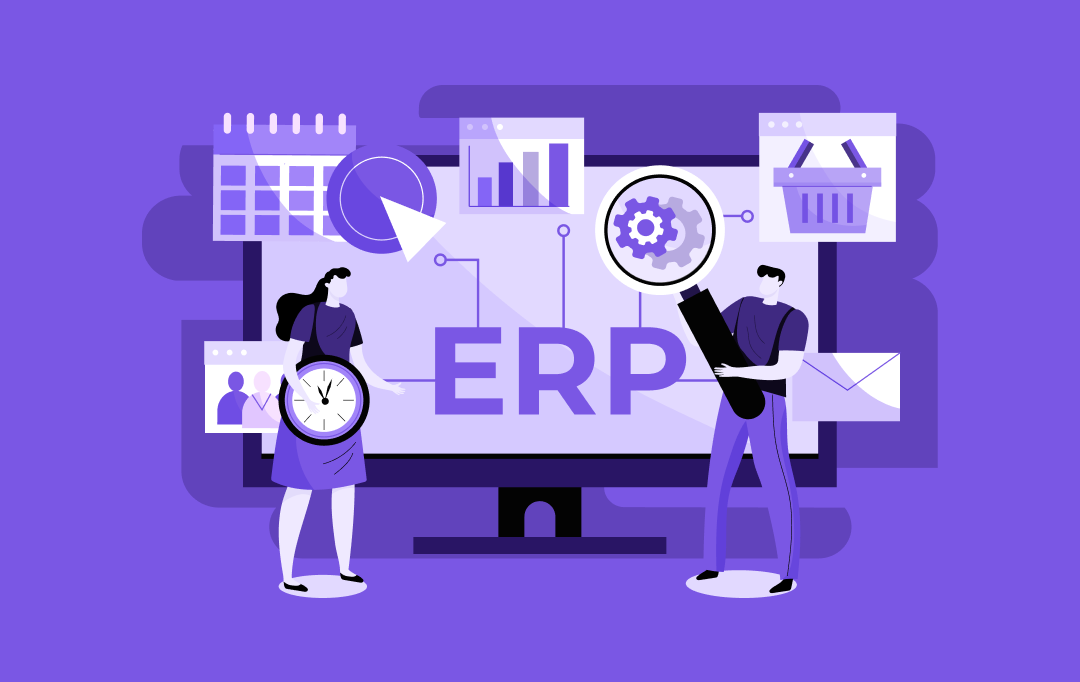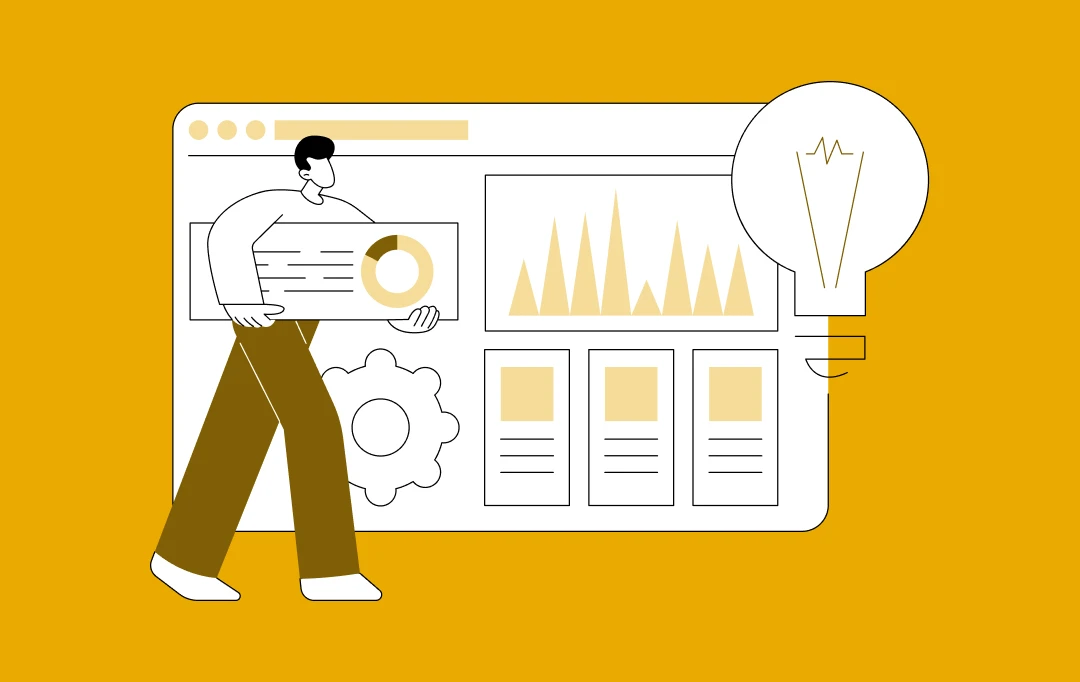- Benefits of Upstream Oil and Gas Software Development
- 1. Enhanced Productivity
- 2. Improved Decision-making
- 3. Regulatory Compliance
- 4. Saving Cost
- 5. Scalability
- 6. Safety Improvements
- Key Applications of Upstream Oil and Gas Software Development
- Improved Drilling
- Reservoir Management
- Production Optimization
- Data Management
- Geological Modeling
- Real-Life Examples of Upstream Oil and Gas Software Development
- Shell - Predictive Maintenance
- British Petroleum - Reservoir Management
- ExxonMobil - Production Optimization
- Chevron - Safety Monitoring
- TotalEnergies - Cloud Solutions for Flexibility
- Technologies to Incorporate in Upstream Oil and Gas Software Development
- Essential Features to Add in Upstream Oil and Gas Software Development
- Steps to Develop the Upstream Oil and Gas Software
- Cost to Develop an Upstream Oil and Gas Software
- Discover How Appinventiv Can Help Your Business with Upstream Oil and Gas Software Development
- FAQs
The oil and gas industry is as demanding as it is complex. Even with the rising consciousness of sustainability and ‘green ventures’, oil demand is forecast to reach a whopping 110 barrels a day by 2034. This necessitates not only increasing investments in production but also funding in developing the right software to handle this surge. But what exactly does oil and gas software development entail?
Among the most prominent oil and gas solutions, upstream oil and gas software development focuses on the initial stages of oil and gas production, which includes exploration, drilling, and production. Designed to assist engineers and professionals with streamlining operations, these software solutions are pivotal for efficiency and accuracy.
According to Business Research Insights, the upstream oil and gas software development market is predicted to grow at a CAGR of 8.35%, reaching $6895.96 million by 2032. Integrating technologies, like IoT, artificial intelligence, and data analytics, is now imperative not only to remain in the competition but to optimally use the extensive data available, reduce costs and adhere to environmental and safety compliance regulations.
In this blog, we’ll cover the numerous benefits of upstream oil and gas software development, its extensive features, development process, and costs.
Benefits of Upstream Oil and Gas Software Development
From capturing complex data points in real-time to providing access to entire supply chain data, the benefits of upstream oil and gas software development are far and wide. Here are some of the advantages:

1. Enhanced Productivity
- Streamlined Operations – The upstream oil and gas software development process incorporates various procedures that streamline operations, leading to more efficient workflows and reducing downtime.
- Automation – It automates routine tasks facilitating faster and more accurate data processing and decision-making. This significantly boosts overall operational efficiency.
2. Improved Decision-making
- Real-time Data Analysis – Advanced analytics and real-time data visualization help make informed decisions quickly. The result? Improved response times and operational agility.
- Predictive Maintenance – Integrating predictive analytics within the software allows it to foresee equipment failures and maintenance needs. This reduces unexpected downtime and extends asset life.
3. Regulatory Compliance
- Compliance Tracking – The software helps track and ensure that regulatory standards related to safety, environmental protection, data privacy, and emissions reduction are adhered to. This is critical in avoiding non-compliance-related fines and legal issues.
- Environmental Monitoring – Features of upstream oil and gas software include facilities to monitor environmental impact. This ensures sustainable practices are increasingly integrated into upstream oil and gas solutions.
4. Saving Cost
- Reduced Operational Costs – Efficient process management and automation help in significant cost-cutting especially in the backdrop of an uncertain market and fluctuating oil prices.
- Optimized Resource Management – Upstream oil and gas data management leads to better resource management and reduced wastage, further curtailing additional costs incurred otherwise.
5. Scalability
- Flexible Solutions – Custom software solutions can scale as and when the business expands, accommodating increased data and operational demands without compromising performance.
6. Safety Improvements
- Risk Management – Enhanced safety features and risk management tools ensure a safer working environment, reducing the likelihood of accidents.
- Incident Tracking – The software allows for the tracking and management of safety occurrences, supporting constant enhancement in safety measures.
Key Applications of Upstream Oil and Gas Software Development
Upstream oil and gas software development has revolutionized various aspects of the industry. It provides specialized solutions for reservoir management, safety monitoring, production optimization, exploration, and drilling. Here are the key applications and use cases.
 Enhanced Exploration
Enhanced Exploration
- Efficient Data Management: Streamlined data management systems enhance the collection, analysis, and interpretation of geological data, making way for better decision-making in exploration.
Improved Drilling
- Precision Drilling: Advanced software solutions improve drilling accuracy and efficiency, cutting down non-productive time and operational costs.
- Safety Enhancements: Software applications help monitor and manage drilling operations, amplifying safety protocols and minimizing the risk of accidents.
Reservoir Management
- Real-time Monitoring: Custom upstream oil and gas software enables consistent monitoring of reservoir conditions, which improves resource recovery and extends reservoir life.
- Accurate Forecasting: Advanced analytics and data integration facilitate precise forecasting, aiding in better planning and decision-making.
Production Optimization
- Operational Efficiency: Upstream oil and gas software development includes tools for production optimization, which help in maximizing output without requiring significant asset upgrades.
Data Management
- Efficient Data Handling: Upstream oil and gas data management solutions streamline the collection, storage, and analysis of vast amounts of data, leading to more informed decisions.
Geological Modeling
- Detailed Subsurface Visualization: Geological modeling software provides detailed visualizations of subsurface formations, aiding in accurate assessments and reducing exploration risks.
- Integrated Data Analysis: These tools integrate geological, geophysical, and petrophysical data, facilitating comprehensive analysis and better decision-making.
Real-Life Examples of Upstream Oil and Gas Software Development
Below we have enlisted a few real-world examples of diverse companies that leveraged the prowess of upstream oil and gas software development, revolutionizing their operations and achieving tangible results.

Shell – Predictive Maintenance
Shell implemented advanced analytics and machine learning algorithms to predict equipment failures by employing tools like Shell LubeAnalyst and Shell Remote Sense.
Shell LubeAnalyst conducts oil analysis, leveraging 30 years of data to foresee potential issues, while Shell Remote Sense combines sensor technology with machine learning to deliver real-time oil condition insights. This approach maximizes uptime, reduces maintenance costs by 5-10%, and optimizes operations through data-driven decisions.
British Petroleum – Reservoir Management
British Petroleum utilized artificial intelligence and data analytics to enhance reservoir management. By integrating various data sources, BP improved resource recovery rates and extended the lifespan of their reservoirs.
The combination of AI and data analytics provided British Petroleum with actionable insights, improving their decision-making processes, reducing associated operational risks, and ultimately contributing to more sustainable resource management.
ExxonMobil – Production Optimization
ExxonMobil introduced the InFocus Online Platform through its Catalysts and Licensing LLC to enhance production processes. This cloud-based system uses advanced analytics to improve plant performance, boost operational efficiency, and reduce production downtime. The platform provides real-time insights, enabling users to make data-driven decisions that streamline operations and increase productivity.
Chevron – Safety Monitoring
Chevron Texaco adopted an automated health and safety reporting system. This solution utilizes document scanning and TeleForm to capture, store, analyze, and translate incident data from site inspection cards into actionable plans.
The system updates Oracle database records and generates 15 predefined reports for easy access by offshore staff. This digital transformation has significantly reduced manual data entry time, provided real-time insights, and enhanced safety monitoring efficiency, helping to identify and address issues quickly.
TotalEnergies – Cloud Solutions for Flexibility
TotalEnergies SE is leveraging cloud-based solutions to enhance flexibility and scalability in upstream operations. They are developing next-generation subsurface digital tools using AI to optimize production and reduce carbon intensity. Their efforts focus on subsurface digital solutions for reservoir engineering and geoscience modeling on SLB’s Delfi digital platform.
Technologies to Incorporate in Upstream Oil and Gas Software Development
When developing custom upstream oil and gas solutions, there are a few technologies that can further strengthen your software to propel growth. Here’s a look at the most crucial ones.
Integrate Internet of Things (IoT): Acquire real-time data from sensors in wells, BOPs, and choke valves for monitoring equipment and optimizing processes.
Also Read: IoT in the Oil and Gas Industry – Benefits, Applications, Challenges and Possible Solutions
Artificial Intelligence (AI): Use AI for predictive, prescriptive, and cognitive analytics to support decision-making and boost ROI through innovative exploration and production concepts.
Big Data & Analytics: Use big data platforms to extract insights from production and performance data, maximizing production and reducing operating costs.
Automation & Robotics: Implement robotics for inspection, surveying, and industrial automation to enhance safety and operational efficiency.
Visualization and 3D Modeling: Create realistic 3D models of underground reservoirs and equipment to optimize production planning and reduce risks.
Cloud Computing: Harness cloud computing for data storage and processing, increasing efficiency, security, and scalability of operations.
Immersive Technologies (XR): Use VR, AR, MR, and ER for remote monitoring, training, and real-time information display to boost productivity and reduce errors.
Manufacturing Execution Systems (MES): Integrate MES with SCADA and other control systems to regulate production processes, fueling the pace of operations and making them more reliable.
Predictive Maintenance: Employ predictive maintenance harnessing sensor data and machine learning to forecast equipment issues and provide timely maintenance solutions.
Essential Features to Add in Upstream Oil and Gas Software Development
One of the biggest benefits of upstream oil and gas software development created using custom software development services is that you can boost your operational efficiency and target specific aspects that demand extra attention.

Some of the core features that you can include in your custom upstream oil and gas software include:
Geological and Seismic Data Management: This functionality grants you the ability to assess potential areas ideal for drilling.
Reservoir Simulation and Modeling: This feature grants the ability to replicate reservoir behavior through simulations. By working on simulated models, organizations can plan better drilling techniques and reduce potential risks.
Drilling and Well Management: This feature enables optimized assessment, planning, execution, and management of oil wells.
Production Monitoring and Optimization: In order to maximize output, this feature enables organizations to evaluate production data in order to monitor the production of oil in wells, and implement enhanced oil recovery tactics in case the obtained volume is low.
Asset Management and Maintenance: This feature assists in keeping track and maintaining the well-being of physical assets used in the procuration of oil; from drilling equipment to pipelines.
Financial and Resource Planning: Specific upstream oil and gas accounting software incorporate this feature that can help plan resources and estimate finances for drilling activities.
Supply Chain and Logistics Management: Custom upstream software with this feature enables organizations to maintain a smooth delivery pipeline– from production centers to refineries to distributors.
Steps to Develop the Upstream Oil and Gas Software
The upstream oil and gas software development process comprises 7 fundamental steps. Therefore, when assessing upstream oil and gas software development costs, make sure to keep these steps under consideration.

Step 1: Analyzing Requirements
Identify specific needs for exploration, drilling, and production by consulting with stakeholders and gathering precise requirements. This primary step makes sure that your software aligns with the upstream oil and gas sector’s unique challenges and objectives.
Step 2: Design and Planning
Develop a system architecture that supports data integration, visualization, and analytics. Plan for scalability and security to accommodate growing data and protect against potential threats, ensuring robust and reliable software.
Step 3: Integrating Data
Integrate data from diverse sources – sensors, historical databases, and real-time monitoring systems. This integration is essential to get a thorough understanding of operations and as a result, improving the decision-making processes.
Step 4: Development
Implement core functionalities, including workflow synchronization, equipment monitoring, and predictive analytics. Develop modules for real-time data processing, visualization, and reporting to enhance operational efficiency and accuracy.
Step 5: Testing
Conduct extensive testing to confirm the software’s dependability and functionality under a variety of scenarios. Perform security testing to avert data breaches and system failures, ensuring that the program runs smoothly and safely.
Step 6: Deployment
Deploy the program in a controlled environment and provide training and support to end users. This process guarantees that the program is properly installed and that users are prepared to use its features efficiently.
Step 7: Monitoring and Maintenance
Continuously monitor system performance and gather user feedback. Implement updates and patches as needed to address operational needs and integrate emerging technologies, ensuring the software remains up-to-date and efficient.
Cost to Develop an Upstream Oil and Gas Software
While initial upstream oil and gas software development costs may be high, the long-term savings and efficiency gains make digitalization a worthwhile investment. The McKinsey report verifies this statement by presenting a real-world example: An Asian oil and gas company generated $150 million in revenue within three years of digitalization.
The cost to develop an upstream oil and gas software can be segmented into various parts:
- Development Cost: The oil and gas upstream software development cost varies greatly depending on features, complexity, and additional integrations. Therefore, software development expenses are usually devised by the project’s scope, technology stack, and development team competence.
- Training Costs: Training costs for users of the new software are often additional. The range is entirely based on the number of users, the training format (on-site or online), and the depth of training required.
- Implementation Costs: Implementation entails delivering software and integrating it into existing systems. These costs include installing the software, configuring it to meet specific requirements, and assuring compatibility with other systems.
- Testing Costs: Testing is critical to verifying that the program works properly and meets all requirements. This comprises functional, performance, and security testing.
- Additional Maintenance Costs: Ongoing costs include software maintenance costs for bug fixes, updates, and technical support that typically range from 15% to 25% of the initial development cost per year.
Discover How Appinventiv Can Help Your Business with Upstream Oil and Gas Software Development
While the demand for oil and gas continues to peak, it is now more essential than ever for companies to embrace the wave of digital transformation. The greatest match for your business is the one that smoothens operational complexity, keeps track of each and every piece of data across all points, keeps all departments in the loop (onsite and offsite), improves worker safety, complies with environmental regulations, enables remote operations, and more.
At Appinventiv, we provide a comprehensive approach to software development, including seamless implementation and robust training programs to maximize your investment. By leveraging our targeted offerings, you can streamline your processes and reduce overall costs, ensuring that your operations are both cost-effective and state-of-the-art.
Explore how Appinventiv can drive transformation with oil and gas software development services and propel your business forward. Get in touch today to learn more about how we can support your success in this dynamic industry.
FAQs
Q. What are the upstream functions of the oil and gas industry?
A. Upstream functions in the oil and gas industry involve exploration and production activities. This includes searching for oil and gas reserves, drilling exploratory wells, and extracting crude oil and natural gas from underground reservoirs.
Q. What are the common applications of upstream software in the oil and gas industry?
A. Some common applications of upstream oil and gas software are the exploration of potential oil and gas reserves, simulating reservoir behavior for detailed assessment, planning drilling activities, managing oil and gas assets, and optimizing logistics and transportation processes.
Q. What are the key technology applications in the oil and gas industry?
A. Big data analytics for operational efficiency, AI and machine learning for predictive maintenance, IoT for real-time monitoring, and automated drilling systems for optimized extraction processes are a few key technological applications of upstream oil and gas software development.
Q. What is the upstream oil and gas software development cost?
A. The estimated average oil and gas upstream software development cost can range from $30,000 to $250,000, based on basic, intermediate, and advanced applications. Factors like custom technology integrations, functionalities, location of the hired software development team, technology stack, team size, etc., are likely to affect these costs, further increasing or decreasing the associated prices.


- In just 2 mins you will get a response
- Your idea is 100% protected by our Non Disclosure Agreement.

Custom Development or White Label Solutions: Which is Right for Your Business?
Key takeaways: 77% of companies are prioritizing digital transformation; the right tech approach is crucial for staying competitive. Custom development offers tailored solutions for unique needs, flexibility, and long-term scalability. Whereas, white-label solutions provide quick market entry, cost-efficiency, and easy customization for standard needs. Appinventiv’s expertise helps you navigate custom development vs white-label to choose…

ERP Integration in Australia - Why It Is Essential and How to Do It Right
Key takeaways: ERP integration enables operational efficiency, reduced costs, and enhanced decision-making. Healthcare, finance, manufacturing, retail, and all the other sectors are benefiting from ERP integrations in Australia. While ERP integration can be costly, ranging from AUD 45,000 - AUD 450,000, it leads to significant long-term savings and scalability. Compliance with Australian regulations is critical,…

Predictive Analytics Software Development - Features, Benefits, Use Cases, Process, and Cost
Key Takeaways Predictive analytics helps businesses shift from “what has happened” to "what will happen," enabling proactive strategies rather than reactive ones. Real-time analytics and AI integration are driving the growth of predictive analytics, making it more accurate, accessible, and critical for business success. Custom predictive analytics solutions can enhance customer satisfaction, reduce costs, and…

















